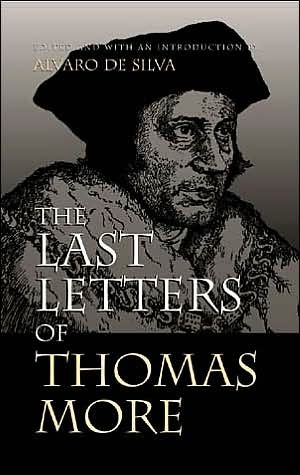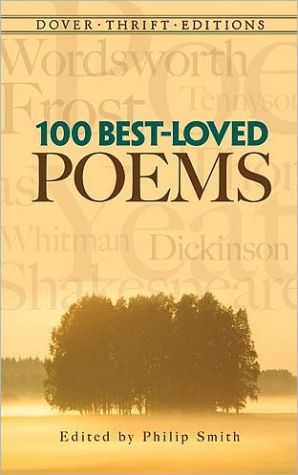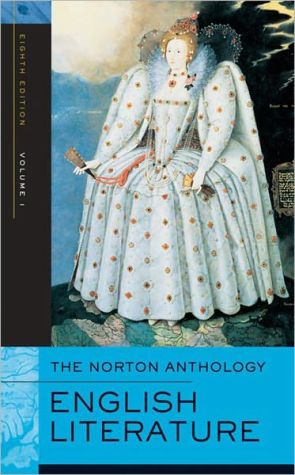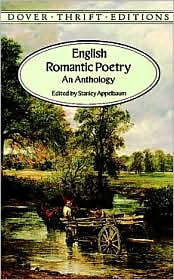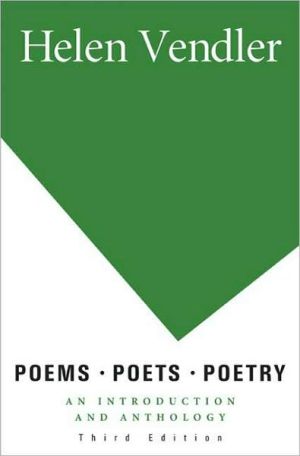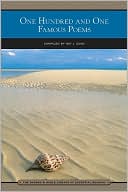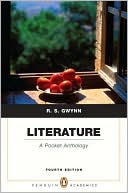The Last Letters of Thomas More
Written from the Tower of London, these letters of Thomas More still speak powerfully today.\ The story of Thomas More, recently told in Peter Ackroyd's bestselling biography, is well known. In the spring of 1534, Thomas More was taken to the Tower of London, and after fourteen months in prison, the brilliant author of Utopia, friend of Erasmus and the humanities, and former Lord Chancellor of England was beheaded on Tower Hill. Yet More wrote some of his best works as a prisoner, including a...
Search in google:
Based on the critical edition of More's prison correspondence, this volume begins with letters to Cromwell and Henry VIII in February 1534, and ends with his last words to his daughter, Margaret Roper, on the eve of his execution. More writes on a host of topics, including prayer and penance, the right to use riches and power, the joys of heaven, depression and suicide, and the moral compromises of his fellow prisoners. De Silva (theology, Thomas More College of Liberal Arts) provides the introduction and commentary. Annotation c. Book News, Inc., Portland, ORCatechist's ConnectionA substantial book that will reap great spiritual benefits is The Last Letters of Thomas More, edited by Alvaro de Silva.... Great reading for daily meditation, one letter at a time.
from the Introduction (pages 5-8)\ \ In the fourteen months of his captivity, among the most critical in the history of England, More wrote A Dialogue of Comfort against Tribulation, a masterpiece of consolation literature, and a much shorter book that he never finished, De tristitia tedio pavore et oratione Christi ante captionem eius ("The Sadness, Weariness, Fear, and Prayer of Christ before His Capture"). The latter is an intimate, powerful commentary, written in the language of the Church, on the Gospel scenes of Jesus in the garden of Gethsemane. The "bitter agony" of Christ had obviously become a constant theme of More's reflection and prayer, and the result is a moving meditation about the ways in which Jesus had himself dealt with his final and decisive hour of suffering and death. The very titles of these last two books unveil More's heart in the hour of his own anguish and perhaps terror. The shadow of imminent and horrifying death looms large on almost every page. Yet, the overall serenity and good humor of both compositions is astounding.\ More kept in touch with his family and other friends through letters. While much of this correspondence was lost, each one of the extant letters is a literary gem and key for understanding his heart and mind. The last creation of a long writing career, these final letters deserve close reading, for they shed abundant light on More's personality. Louis Martz has rightly written that they are "of the utmost importance, because they constitute the best account of More's conduct during his interrogations and imprisonment, the best account of his state of mind, and, it is not perhaps too much to say, some of his finest works of art. They are indeed works of art in every sense of that word, for they show the most artful regard for the presence of two or three or more different audiences. More could have no doubt that every letter he wrote might be carefully read by his keepers, perhaps even sent to Cromwell himself, who was, as More well knew, alert to every phrase which might entrap More into a confession or a recantation."\ If these letters are works of art, they are also historically important, and equally relevant as religious documents. Indeed, it is not easy to understand why they are not better known and more easily available. William Rastell printed the Tower correspondence in the English Works edition of 1557; and Thomas Stapleton, More's first biographer in Latin, gathered some letters and fragments for his Vita Thomae Mori, published in Douai in 1588. But otherwise, the whole of More's extant correspondence had a rather obscure existence until the fine edition of Elizabeth Frances Rogers, published in 1947. (It is not right that scholars of the Reformation should be the only ones to read and benefit from these classic documents. They truly deserve a much wider audience.)\ This edition of More's prison correspondence includes those letters written from early 1534 through July 5 of the following year, the eve of his execution. From his own pen we have four letters to Thomas Cromwell; one to Henry VIII; eight to his daughter Margaret Roper; two letters to theologian Nicholas Wilson and one to another priest, Leder, both his fellow prisoners in the Tower; one in Latin to his dear friend Antonio Bonvisi; a brief note to all his friends; and another letter, the longest and without doubt composed by More himself, although it is addressed "from Margaret Roper to Alice Alington," and according to an old opinion was written jointly by father and daughter. The correspondence also includes two letters from Margaret to her father, one letter to Margaret Roper written by Alice Alington (More's stepdaughter), and another two written by Dame Alice, More's second wife: one of these to Thomas Cromwell and the other to the King. All in all, there are twenty-four letters, a most worthy complement to the two books More wrote in the Tower.\ While a prisoner, More wrote on a wide variety of topics, from prayer and penance to the right use of riches and power, from the joys of heaven to psychological depression and suicidal temptations. Often he must have written to carry himself through his own ordeal. Beneath the serenity of his prison writings lies his personal drama. In his last writings More made a passionate protest against the moral compromises of those who had sent him to the Tower. Shut up behind thick walls, the unrelenting controversialist could at last leave behind his theological fight, but the old energy remained. More knew that whatever he wrote would be read at least by Cromwell and perhaps by the members of the Royal Council, so he chose very carefully the words to express his indignation; and we should read the letters with this in mind. But More's subtlety does not compromise his clarity, and here at last this Christian man becomes wise as the serpent and simple as the dove. The silence of Thomas More in the Tower has become proverbial.\ If he had been Morus furiosus, a wrathful apologist of his faith, as a prisoner he could not but be Morus patiens, patient and forgiving. Patience, however, need not be passivity, and "to resist" in the midst of hardship and the double threat of torture and death, as More did, is the greatest act of fortitude. This hidden energy adds great power to his final writings. More's personal apologia is now as subtle and refined as it is daring and firm.\ From the day he was summoned to Lambeth, More felt his ordeal to be a victory—not final, perhaps, but crucial. That day when he left his home, already in the barge that would take him away, More told his son-in-law, "Son Roper, I thank our Lord the field is won." William Roper would later confess that he did not understand these words. But More was accustomed to paradox, and none of the humiliations and sufferings he had long ago foreseen could diminish in him the realization of his spiritual freedom. "The field is won!" He had to part with everyone and everything he loved in order to secure the victory, but there it was, close at hand.\ Even the most casual reading of these letters illuminates his spiritual condition. More is, from beginning to end, from the Island of Utopia to the Tower of London, ever the dedicated Christian humanist. Not to see this is, I think, to misunderstand him and to make him a fanatic, a reactionary, and a humanist writer who completely lost his emotional control and whose voluminous polemical writings should be dismissed not only as boring but as insane. Nothing can be further from the truth. As Richard Marius points out, More "died magnificently, but his death was not the headlong rush of a fanatical zealot into oblivion; it was the fearful, considered decision of a man of great self-knowledge, doing what he had to do and wishing almost until the end that he did not have to do it.... Perhaps for us the habitual waging of such a hard, inner warfare in Thomas More is lesson enough for our season. For it may be that only those who patiently struggle without victory in such lifelong conflicts within themselves are worthy to be called saints."
AcknowledgmentsviiA Note on the TextviiiIntroduction: Good Company11To Thomas Cromwell, Chelsea, 1 February 1533/4312To Thomas Cromwell, Chelsea, February-March 1533/4343To Thomas Cromwell, March 1534364To Henry VIII, Chelsea, 5 March 1534455To Thomas Cromwell, Chelsea, 5 March 1534486To Margaret Roper, Tower, circa 17 April 1534577To Margaret Roper, Tower of London, April-May? 1534628To Margaret Roper, Tower, May 1534649From Margaret Roper, May? 15346610To All His Friends, Tower, 15346811Alice Alington to Margaret Roper, 17 August 15346912Margaret Roper to Alice Alington, August 15347213To Dr. Nicholas Wilson, Tower, 15349014To Dr. Nicholas Wilson, Tower, 15349115From Margaret Roper, 15349716To Margaret Roper, Tower, 15349917To Margaret Roper, Tower, 153410418Lady More to Henry VIII, around Christmas 153410819To Master Leder, Tower, 16 January 1534/511020To Margaret Roper, Tower, 2/3 May 153511221Lady More to Thomas Cromwell, May 153511622To Margaret Roper, Tower, 3 June 153511823To Antonio Bonvisi, Tower, 153512324To Margaret Roper, Tower, 5 July 1535127Commentary131Glossary195Bibliography203Index211
\ Catechist's ConnectionA substantial book that will reap great spiritual benefits is The Last Letters of Thomas More, edited by Alvaro de Silva.... Great reading for daily meditation, one letter at a time.\ \ \ \ \ Library JournalDe Silva (theology, Thomas More Coll. of Liberal Arts) has gathered together the letters Thomas More wrote to Margaret Roper, Henry VIII, Thomas Cromwell, Dr. Wilson, and others two years before his execution. Any More enthusiast will treasure this collection beyond measure, as it offers a clear window onto the soul of one of history's noblest figures. The statesman's plight becomes the reader's very own: confined in the Tower of London, awaiting the inevitable chopping block. What emerges most poignantly from the letters is More's selfless integrity as distinct from the stubborn individualism so often attributed to him. According to de Silva's own lucid and informative introduction, "More did not exhibit an individualism or an autonomy of the `I' that has no room for anything else...he simply knew that to take the oath [to Henry VIII] would mean the loss of his own self, his own spiritual integrity." Endnotes elaborate on cultural, political, and religious allusions that would otherwise confuse one unfamiliar with the time period. This book makes for a fine supplement to Peter Ackroyd's recent biography, The Life of Thomas More (LJ 6/1/98). Essential for academic libraries; highly recommended for large public libraries.--Loren Rosson III, Nashua P.L., NH Copyright 2000 Cahners Business Information.\\\ \
